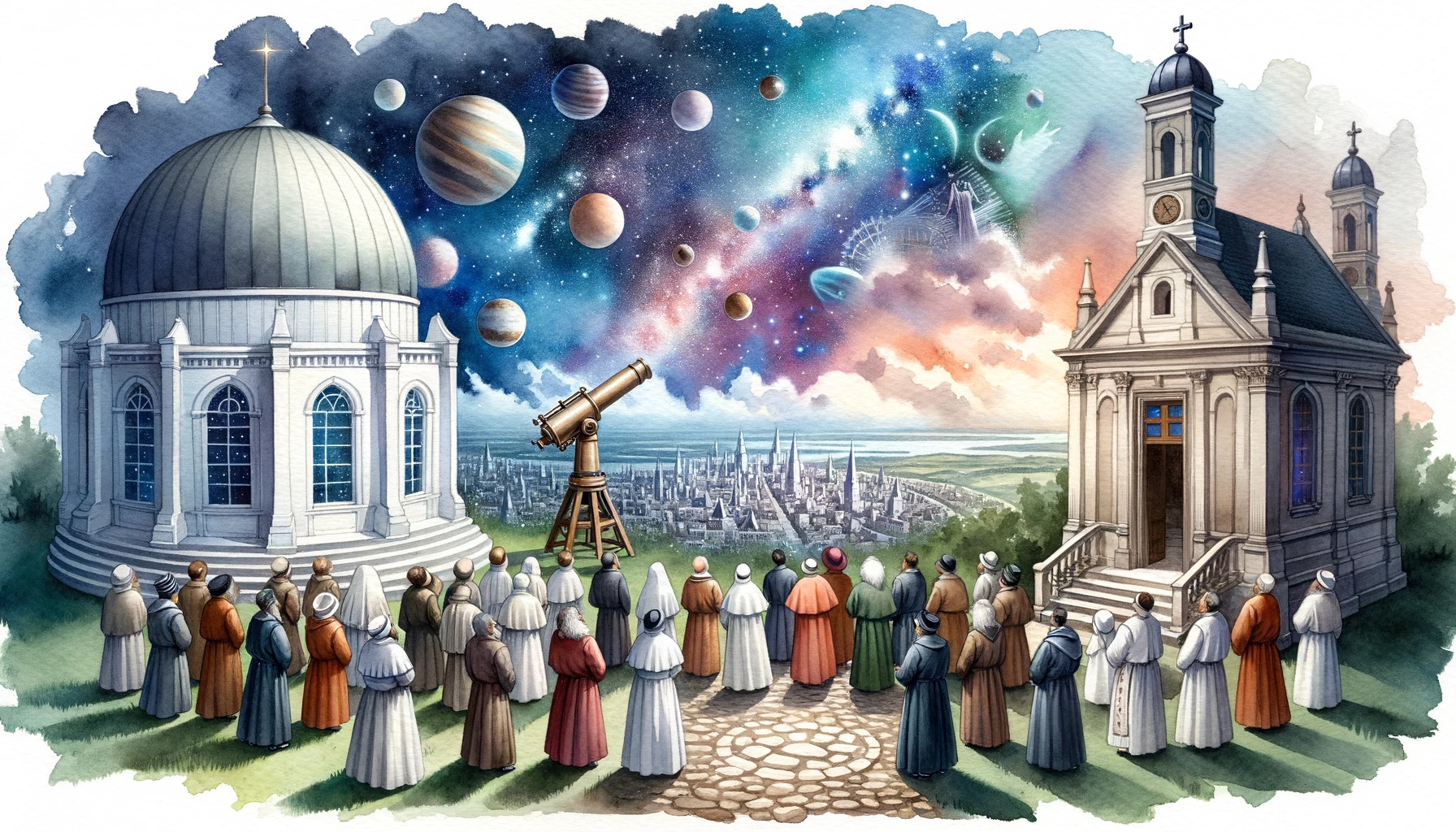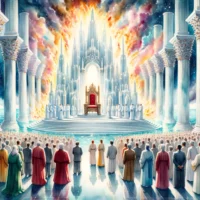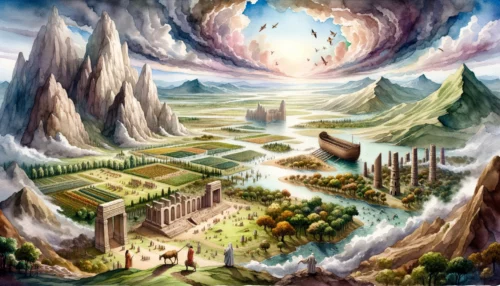It is not uncommon to encounter questions about the compatibility of faith and science, two fields often viewed as opposing forces. We, as followers of Christ, believe in a God who created the universe and its intricacies, yet we also live in an era defined by scientific advancements and discoveries. The question then arises: Does our faith in God contradict the principles and findings of science? This article aims to explore this intricate relationship, seeking harmony and understanding.
Understanding the Foundations: God and Science
At the heart of the Christian faith lies the belief in a purposeful Creator, the God who spoke existence into being. This belief is anchored in the opening chapter of Genesis, where the story of creation is recounted (Genesis 1). Here, we learn that God fashioned the universe, the earth, and all living creatures in a structured and orderly manner. This reveals a God of intentionality and precision, traits that align perfectly with the scientific pursuit of understanding our world and beyond.
Science, on the other hand, is the systematic study of the structure and behavior of the physical and natural world through observation and experiment. It seeks to understand the laws that govern our universe and explain the phenomena we encounter in our daily lives. Scientists, like believers, seek truth. They desire to understand how things work, how they came to be, and what their purpose might be.
Where faith declares belief in a purposeful Creator, science seeks to understand the creation. They both hold a common thread – a pursuit of truth. Faith is not against the pursuit of knowledge; rather, it encourages it. The Bible encourages us to ‘test everything’ and ‘hold fast to what is good’ (1 Thessalonians 5:21), a sentiment echoed in the scientific method, which requires testing and validation of hypotheses.
The Bible also tells us that God’s invisible qualities, His eternal power and divine nature, have been clearly seen, being understood from what has been made (Romans 1:20). This indicates that the natural world, which science seeks to understand, can also point us towards understanding the nature of God.
In the realm of faith, we believe that God is not a God of disorder but of peace (1 Corinthians 14:33). In the same vein, science reveals an orderly universe governed by physical laws. From the orbits of planets to the behavior of atoms, everything follows a precise pattern. This suggests that the God who designed the universe is a God of order – a notion that aligns perfectly with scientific findings.
The foundations of both faith and science do not inherently conflict but rather complement each other. Both are journeys in the pursuit of truth – faith, in a divine Creator, and science, in the systematic understanding of His creation. The orderly and precise nature of the universe, as revealed through science, is a testament to the nature of God, as described in the Bible. Therefore, at their core, faith in God and the pursuit of scientific knowledge can exist in harmony, each providing a unique lens through which to view and understand the world around us.
The Harmony of God’s Creation and Scientific Discovery
Many believers find awe and wonder in the creation narrative. It begins with God speaking light into existence, separating the heavens and the earth, and filling them with life (Genesis 1). This isn’t merely a beautiful story, but also a testimony to the grandeur and complexity of the universe. From the majesty of the cosmos to the intricacy of DNA, we see the fingerprints of the divine throughout creation.
Science, in its quest for understanding, continually uncovers the splendors of the universe. Every discovery, from the smallest subatomic particle to the vastness of galaxies, reveals a depth of complexity and precision that resonates with the nature of God as depicted in the Bible. The human body itself, with its billions of interconnected cells and intricate systems, reflects the creative genius of a Designer.
The Bible suggests that all creation points to the glory of God (Psalm 19:1). For instance, when we observe the order and predictability of the seasons, the migration patterns of birds, or the life cycle of a butterfly, we see a system at work that speaks to the glory and creativity of God. These natural phenomena, which science seeks to understand, are a testament to His handiwork.
Jesus Himself used the natural world to teach spiritual truths. He spoke of seeds, birds, flowers, and fields (Matthew 6:26-30; 13:1-23). His parables were filled with agricultural, biological, and ecological references, indicating that the natural world, understood by science, is not only compatible with faith but can also enhance and deepen it.
Science and faith aren’t just compatible; they enhance one another. Science illuminates the intricacies of God’s creation, offering believers a richer understanding and appreciation of His majesty. And faith, in turn, offers a context of purpose and meaning to scientific discovery.
Science and faith can walk hand in hand, each illuminating the other in significant ways. Science exposes the complexities and intricacies of God’s creation, offering a profound appreciation of His majesty, while faith provides the broader context, imbuing scientific discovery with purpose and meaning. Instead of seeing them as opposing forces, we can embrace both as ways to explore and appreciate the richness of God’s universe.
Handling Apparent Conflicts: Biblical Interpretation and Scientific Theory
Sometimes, it might seem like there are conflicts between faith and science, primarily when specific biblical passages seem to contradict current scientific understanding. However, it’s essential to understand that the Bible isn’t primarily a science textbook. Instead, it’s a guide to understanding God, our relationship with Him, and our role in His creation. It uses the language and understanding of the world at the time it was written to communicate timeless truths.
The Bible tells us that God spoke the universe into existence (Genesis 1), but it doesn’t provide a detailed account of the mechanisms He used. The language used is poetic and filled with imagery, inviting readers into the beauty and wonder of creation rather than providing a scientific account of how it all happened.
For instance, the creation story in Genesis describes a six-day creation process. Many interpret these ‘days’ literally, while others view them as metaphorical or symbolic, perhaps representing vast periods of time. Both views can be held by faithful believers. As long as we hold to the truth that God is the Creator, the exact process and timeline He used can be a matter of interpretation, leaving room for scientific theories like the Big Bang and evolution.
The same principle applies to other areas where science and the Bible might seem to disagree. The Bible talks about the ‘four corners of the earth’ (Revelation 7:1), a phrase that seems to suggest a flat earth. However, this phrase can be understood as an idiom, a figure of speech understood by the people of that time, rather than a scientific statement about the shape of the earth.
When it seems like there’s a conflict between the Bible and science, it’s often because we’re reading the Bible in a way it was not intended to be read. It’s crucial to approach the Bible with an understanding of its context, genre, and purpose. Doing so will often resolve apparent conflicts and allow faith and science to coexist harmoniously.
The Bible and science don’t need to be at odds. The Bible communicates timeless truths about God and our relationship with Him, while science explores the intricacies of the natural world. By interpreting the Bible in its intended context and acknowledging the exploratory nature of science, we can reconcile apparent conflicts and appreciate both as valuable means of understanding our world and the God who created it.
Finding Harmony: Faith and Science
Faith in God and science do not necessarily contradict but can coexist harmoniously. Both faith and science are about seeking truth – one in the realm of the spiritual and divine, the other in the physical and natural world. They’re two different lenses through which we view and understand the universe and our place in it.
Reflect on these questions:
- How has your perception of the relationship between faith and science changed after reading this article?
- In what ways can you personally integrate your faith and scientific understanding in your daily life?
- Can you identify areas in your life where faith and science intersect and enhance your understanding of the world?
Life is a journey of discovery, of learning, and of growth. Let your faith and your scientific curiosity both light your way. Together, they can lead you to a richer, deeper understanding and appreciation of this wonderful, complex, and beautiful universe that our Creator God has lovingly fashioned.














